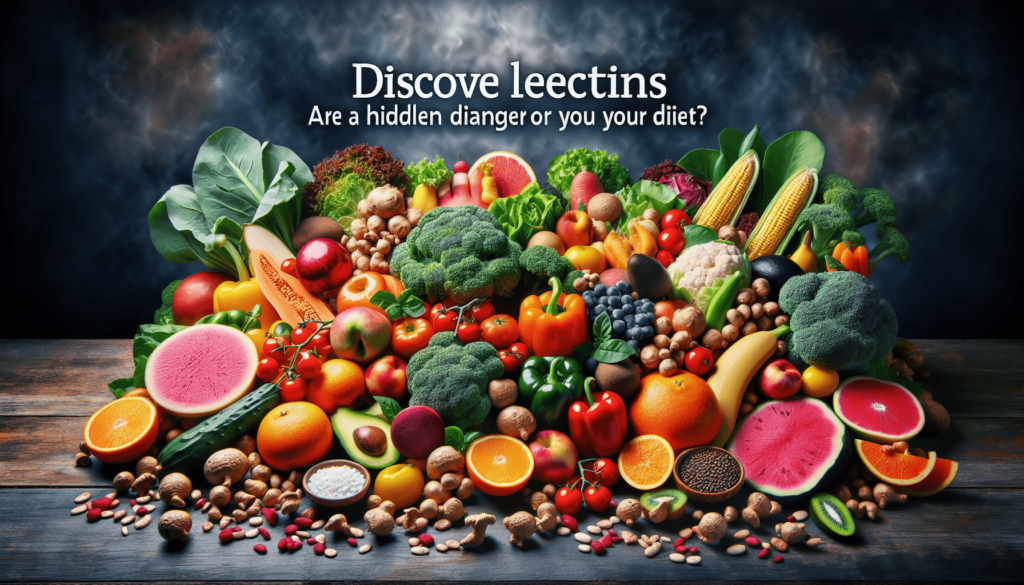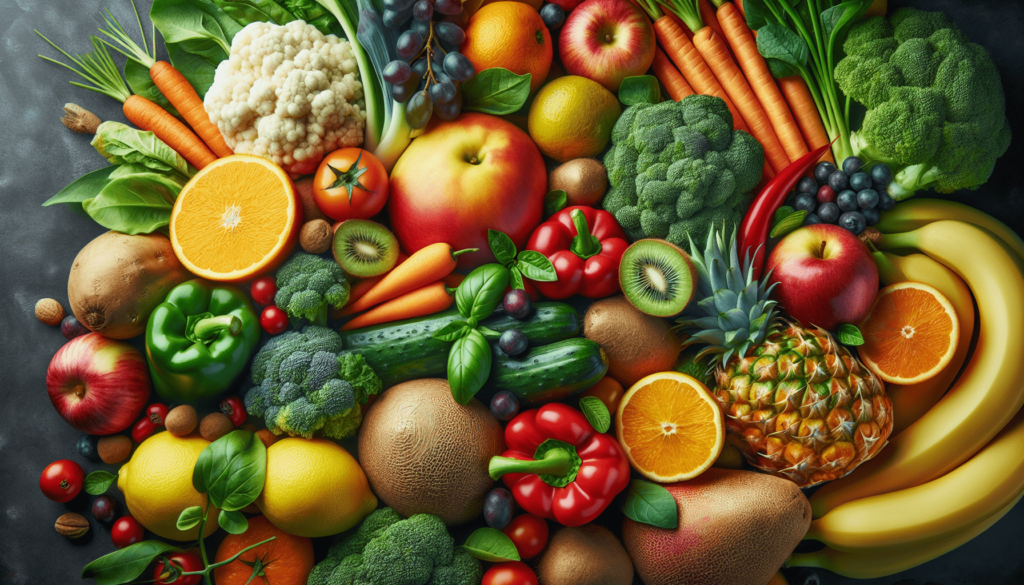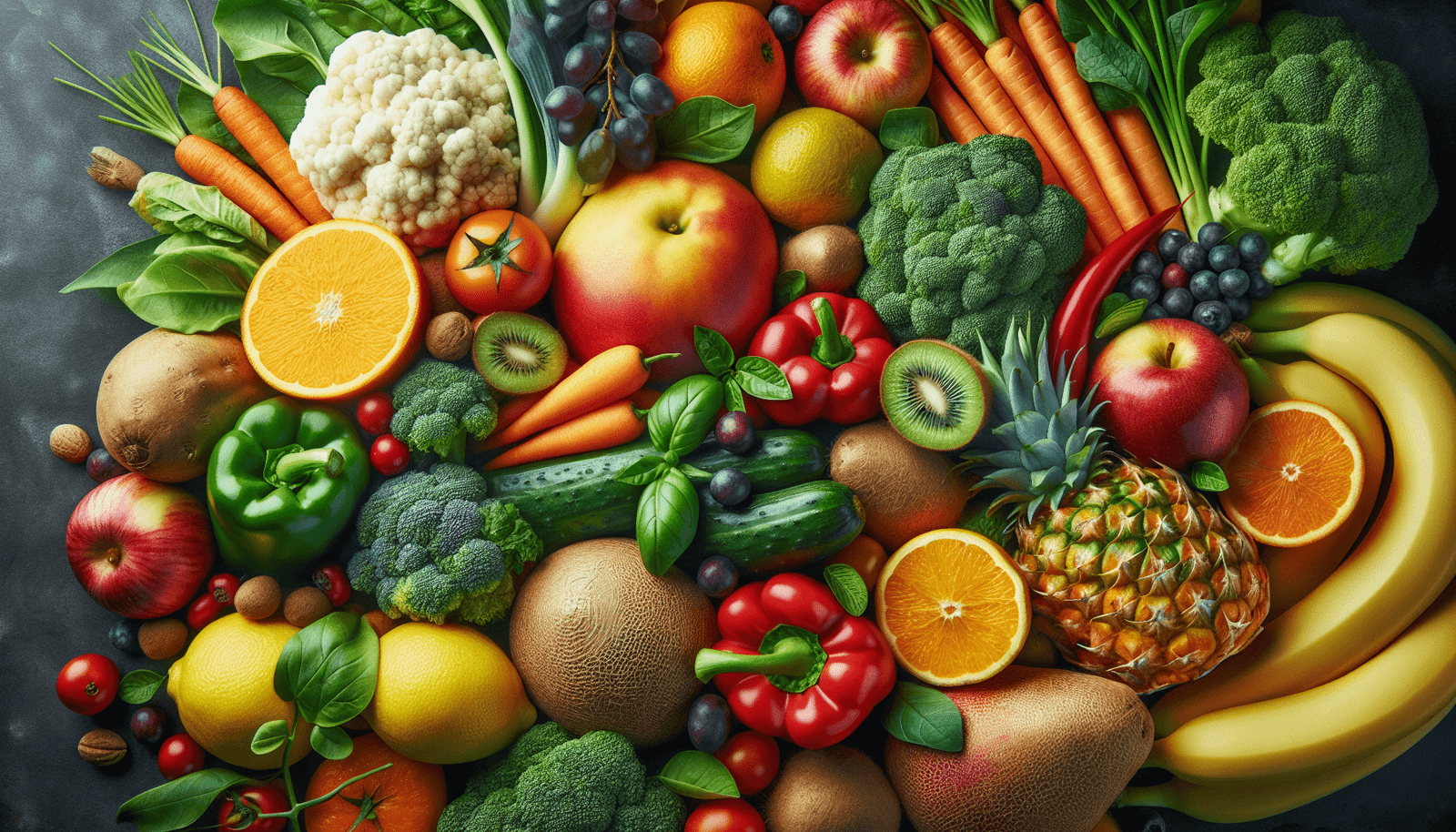Are you unknowingly consuming a substance in your food that could be detrimental to your health? Enter lectins – the anti-nutrient that has been getting quite a bit of attention in the world of nutrition. While they may sound intimidating, lectins are actually naturally occurring proteins found in many foods we eat on a daily basis. In this article, we’ll take a closer look at what lectins are, how they can impact your body, and whether you should be concerned about their presence in your diet. So, grab a seat, and let’s uncover the mystery of lectins together.
What are Lectins?
Definition
Lectins are a type of protein that can bind to carbohydrates. They are naturally occurring substances found in a wide range of plant foods, including grains, legumes, fruits, and vegetables. Lectins play a role in plant defense mechanisms and seed germination, as well as in binding and transport processes within plants.
Occurrence in Food
Lectins are abundant in many commonly consumed foods. They can be found in high amounts in legumes such as beans, lentils, and chickpeas, as well as in grains like wheat, barley, and rice. Lectins are also present in nightshade vegetables like tomatoes, potatoes, and eggplants, as well as in certain fruits and nuts. It is important to note that the levels of lectins in food can vary depending on factors such as plant variety, ripeness, and processing methods.
The Role of Lectins in Plants
Defense Mechanism
One of the primary roles of lectins in plants is to serve as a defense mechanism against predators. When insects or other animals consume plants containing lectins, these proteins can bind to the lining of their digestive tract and interfere with nutrient absorption, ultimately deterring the predator. This defense mechanism helps protect the plant from being eaten and allows it to thrive.
Seed Germination
Lectins also play a crucial role in the process of seed germination. They act as natural growth factors and help facilitate the activation of enzymes necessary for the plant to sprout and grow. By binding to specific carbohydrates on the surface of seeds, lectins enable the initiation of germination and promote the development of new plant life.
Binding and Transport
Within plants, lectins have the ability to bind to carbohydrates and facilitate various transport processes. They can assist in the movement of molecules across plant cell walls and membranes, ensuring the efficient distribution of nutrients and other important compounds throughout the plant. Lectins often serve as important signaling molecules, guiding cellular processes and contributing to the overall health and function of the plant.

The Potential Health Effects of Lectins
Digestive Issues
Due to their ability to bind to the lining of the digestive tract, lectins have the potential to cause digestive issues in some individuals. When lectins interact with the cells of the gut lining, they can disrupt the normal functioning of the digestive system and lead to symptoms such as bloating, gas, diarrhea, and stomach pain. However, it is important to note that lectin sensitivity varies between individuals, and not everyone experiences these symptoms.
Inflammation
Another potential health effect of lectins is their ability to trigger inflammation in the body. When lectins interact with certain immune cells, they can activate an immune response and cause the release of substances that promote inflammation. Inflammation is a natural and necessary process in the body, but chronic inflammation has been linked to the development of various diseases, including heart disease, diabetes, and certain types of cancer.
Nutrient Absorption Interference
Lectins can interfere with the absorption of nutrients in the gut. By binding to carbohydrates on the surface of the gut lining, lectins can prevent the proper absorption of vitamins, minerals, and other essential nutrients from food. This interference can potentially lead to nutrient deficiencies and compromise overall health and well-being. However, it is worth noting that the extent of this interference varies among individuals and is influenced by factors such as lectin type, concentration, and individual gut health.
Types of Lectins and Their Food Sources
Legume Lectins
Legume lectins are a prominent type of lectin found in various legumes, including beans, lentils, and peas. The lectins in legumes, such as phytohaemagglutinin in red kidney beans, are known to be heat-resistant and can cause gastrointestinal distress if consumed in their raw or undercooked form. However, proper cooking techniques, such as boiling legumes for an extended period, can significantly reduce the lectin content and eliminate the associated risks.
Grain Lectins
Grains, such as wheat, barley, and rice, also contain lectins. Wheat germ agglutinin (WGA) is one of the most well-known lectins found in grains. It has been suggested that WGA may contribute to digestive issues and inflammation in some individuals. However, it is important to remember that grains play a significant role in many people’s diets and provide valuable nutrients, so complete avoidance may not be necessary for everyone.
Nightshade Lectins
Nightshade vegetables, including tomatoes, potatoes, and eggplants, contain a type of lectin known as solanine. Like other lectins, solanine can cause digestive disturbances and inflammation in susceptible individuals. However, the levels of solanine can vary significantly depending on factors such as the maturity of the plant and the cooking method used. Cooking nightshade vegetables thoroughly and opting for ripe varieties can help reduce the lectin content.

Lectins and the Gut
Interaction with Gut Lining
When consumed, lectins can interact with the gut lining and potentially disrupt the integrity of the intestinal barrier. This disruption can lead to increased permeability, often referred to as “leaky gut syndrome.” In a leaky gut, substances that are normally too large to pass through the intestinal lining can enter the bloodstream, triggering an immune response and potentially leading to various health issues.
Impact on Gut Microbiota
Lectins can also influence the composition and function of gut microbiota, which refers to the community of microorganisms residing in the digestive tract. Certain lectins have been shown to selectively promote the growth of certain bacteria while inhibiting others. Changes in the gut microbiota can have far-reaching effects on health, as it is involved in various physiological processes, including digestion, immune function, and even mental health.
Leaky Gut Syndrome
Leaky gut syndrome, often associated with lectin consumption, is a condition characterized by increased intestinal permeability. This condition allows toxins, undigested food particles, and bacteria to pass through the intestinal wall into the bloodstream. This triggers an immune response and can potentially contribute to the development of chronic inflammatory conditions and autoimmune disorders. However, it’s important to note that the relationship between lectins and leaky gut syndrome is still being researched, and individual responses to lectin consumption can vary.
Cooking and Processing: Do They Reduce Lectins?
Effect of Heat
Cooking and processing methods can significantly reduce the lectin content in food. Heat, in particular, has been shown to denature lectins and make them less biologically active. Boiling legumes, for example, can decrease the lectin content by up to 85% compared to the raw state. Similarly, baking or roasting grains and nightshade vegetables at high temperatures can help decrease lectin levels. It is important to note that while cooking can reduce lectin content, it is essential to apply appropriate techniques to ensure the elimination of lectins and their associated risks.
Fermentation and Soaking
Fermentation and soaking are traditional food preparation techniques that can also help reduce lectin levels. Fermenting foods, such as in the case of sourdough bread, can break down lectins and make them more digestible. Soaking legumes and grains overnight, followed by proper cooking, can decrease lectin levels further. These techniques can be beneficial for those who are particularly sensitive to lectins or wish to reduce their lectin intake.
Pressure Cooking
Another popular cooking method often recommended for reducing lectins is pressure cooking. High-pressure cooking can effectively break down lectins and render them less harmful. Pressure-cooked legumes, for instance, have been found to have significantly lower lectin levels compared to traditionally cooked legumes. Utilizing pressure cooking techniques can be an effective way to mitigate the potential negative effects of lectins.
Lectins and Chronic Diseases
Obesity
There is emerging research suggesting a potential link between lectin consumption and obesity. Some studies have found that lectins can interfere with signals related to hunger and satiety, leading to an increased appetite and overeating. Additionally, lectins can impact gut health and the composition of the gut microbiota, which can influence weight management and insulin sensitivity. However, more research is needed to fully understand the role of lectins in obesity and weight-related conditions.
Autoimmune Disorders
Lectins have been implicated in the development and progression of autoimmune disorders. Autoimmune conditions occur when the immune system mistakenly attacks healthy cells and tissues. Some lectins, such as gluten, have been shown to trigger immune responses and promote inflammation in susceptible individuals, potentially contributing to autoimmune diseases. It is important for individuals with autoimmune conditions to work with healthcare professionals to determine their specific dietary needs and to understand the role of lectins in their condition.
Cardiovascular Health
Lectins have also been linked to cardiovascular health. Some research suggests that certain lectins, such as those found in beans and peanuts, may have protective effects against cardiovascular disease. On the other hand, other lectins, such as those in wheat, have been associated with increased inflammation and cardiovascular risk. The potential impact of lectins on heart health is complex and requires further investigation. It is advisable to adopt a balanced approach to nutrition, including a variety of foods, for optimal cardiovascular health.
The Lectin-Free Diet: Fad or Fact?
Overview of the Diet
The lectin-free diet has gained popularity in recent years and involves eliminating or drastically reducing the consumption of foods high in lectins. Proponents of this diet claim that avoiding lectin-rich foods can lead to improved digestion, reduced inflammation, and better overall health. However, it is worth noting that this diet restricts many nutrient-dense foods, such as whole grains, legumes, and certain fruits and vegetables, potentially leading to nutritional imbalances if not carefully planned.
Benefits and Limitations
Some individuals may experience improvements in their digestion and overall well-being by reducing lectin intake, particularly if they have known sensitivities or digestive issues. However, it is important to recognize that lectins are only one piece of the nutritional puzzle, and a balanced approach to eating is crucial for optimal health. Restricting entire food groups solely based on lectin content may lead to nutrient deficiencies and further dietary complications.
Scientific Evidence
While some studies suggest potential negative effects of lectins, particularly for susceptible individuals, the scientific evidence surrounding lectin consumption and its direct impact on human health is limited. Further research is needed to fully understand the mechanisms by which lectins affect the body and to determine the appropriate dietary recommendations for different populations. It is essential to consult with healthcare professionals and registered dietitians for personalized nutrition advice based on individual needs and health conditions.
Managing Lectin Intake
Food Preparation Techniques
To manage lectin intake, various food preparation techniques can be employed. Soaking, fermenting, pressure cooking, and thorough cooking in general can significantly reduce lectin levels in foods. By properly preparing and cooking foods, individuals can help mitigate any potential negative effects associated with lectin consumption. It is important to note that each food group has its own considerations, and it’s advisable to research specific techniques for the foods being consumed.
Individual Sensitivities
Individuals may differ in their sensitivity to lectins, and some may experience adverse effects when consuming lectin-containing foods. Paying attention to personal symptoms and reactions after consuming certain foods can help identify potential lectin sensitivities. Keeping a food diary and working with a registered dietitian can be beneficial to pinpoint specific triggers and develop a personalized approach to managing lectin intake.
Balancing Nutritional Needs
While it is important to be mindful of lectin consumption, it is equally important to maintain a well-rounded and balanced diet to meet all nutritional needs. Restricting certain food groups solely based on lectin content may lead to nutritional deficiencies. It is crucial to incorporate a variety of nutrient-rich foods, including fruits, vegetables, whole grains, lean proteins, and healthy fats, to ensure an adequate intake of essential vitamins, minerals, and macronutrients.
Conclusion
Understanding the role of lectins in plants and their potential effects on human health is a complex and evolving field of research. While lectins have been associated with digestive issues, inflammation, and nutrient absorption interference, the impact varies between individuals. Cooking and food preparation techniques such as soaking, fermenting, and pressure cooking can significantly reduce lectin content. The lectin-free diet has gained popularity, but its benefits and limitations should be carefully considered. Managing lectin intake should be approached on an individual basis, taking into account personal sensitivities and nutritional needs. Adopting a personalized approach to nutrition, working with healthcare professionals, and maintaining overall dietary balance are key to optimizing health and well-being.

